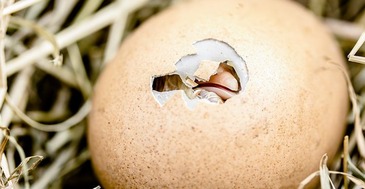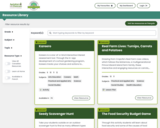
Students will observe the power of seeds by germinating soybeans in plaster of Paris.
- Subject:
- Agriculture Studies
- Material Type:
- Activity/Lab
- Lesson
- Provider:
- Iowa Agriculture Literacy Foundation
- Author:
- Cindy Hall
- Date Added:
- 10/11/2018

This collection has resources for Grade 4 to Grade 6 agriculture education.

Students will observe the power of seeds by germinating soybeans in plaster of Paris.

The following is a list of picture books that teachers can reference when looking for books to use in the classroom that will infuse agriculture into lessons they're already teaching. These books would be very useful to teach a variety of reading strategies and comprehension tools with such as making connections, predicting, and determining author's purpose.

Students will get a broader understanding about agriculture and the use of pumpkins. Students will learn about the lifecycle of the pumpkin and the pumpkin industry. Students will practice math skills with measurements and make a pumpkin pie in a bag

Take a virtual field trip of Rayner Dairy Barn in Saskatoon and then follow up with some classroom activities.Watch the video here.

This is a resource for teachers that explores sustainability, agriculture policy, current issues and more!

This story follows Reggie as he explores the different types of technology used in the agriculture industry.

Your Saskatchewan Seed Kit comes complete with 5 sets of 13 seed samples of Saskatchewan's most commonly grown crops and suggested activities to engage your students in learning about crop production in Saskatchewan. The lesson plans were revised in 2016! One kit per teacher. Available in French "La Trousse de semences de la Saskatchewan".

In this lesson, students will observe corn and soybean seeds as they germinate and compare monocots and dicots.

Over the course of three sessions, students act as agricultural engineers and learn about the sustainable pest control technique known as soil biosolarization in which organic waste is used to help eliminate pests during soil solarization instead of using toxic compounds like pesticides and fumigants. Student teams prepare seed starter pots using a source of microorganisms (soil or compost) and “organic waste” (such as oatmeal, a source of carbon for the microorganisms). They plant seeds (representing weed seeds) in the pots, add water and cover them with plastic wrap. At experiment end, students count the weed seedlings and assess the efficacy of the soil biosolarization technique in inactivating the weed seeds. An experiment-guiding handout and pre/post quizzes are provided.

This storybook tells the story of two young children who decide to grow a garden. Along the way, they face many of the same issues in their garden that their parents face on the farm. Together the family experiences the wonders of growing food while learning about balancing the growing food with caring for the environment.

Students will observe how plants respond to gravity by germinating soybeans in a CD case and rotating the case as they grow.

Students will have a greater understanding of how turkeys are raised and how this important part of Thanksgiving dinner gets from the farm to your dinner table.

Tour a farm or processing facility from the comfort of your couch! FarmFood360° is a series of virtual farm and processing facility tours throughout Canada. Students can test their knowledge at the end of each tour.
Check out a sheep farm, apple orchard, mushroom farm, or even see cheese being made!
Most tours also include a brief quiz to test your knowledge after the tour!
Sign in to your Agriculture In the Classroom Canada account to view the resource. Or sign up today to access various national and provincial AITC programs.

This is a list of Virtual Reality Expeditions that address and would incorporate Agriculture into your classroom in a fun and exciting way.

Students will learn about the ways in which water can become polluted, ways to conserve it, and why it is important to conserve water.

Students will show understanding that humans are dependent on plants and animals for many purposes and that many of these resources come from agriculture.